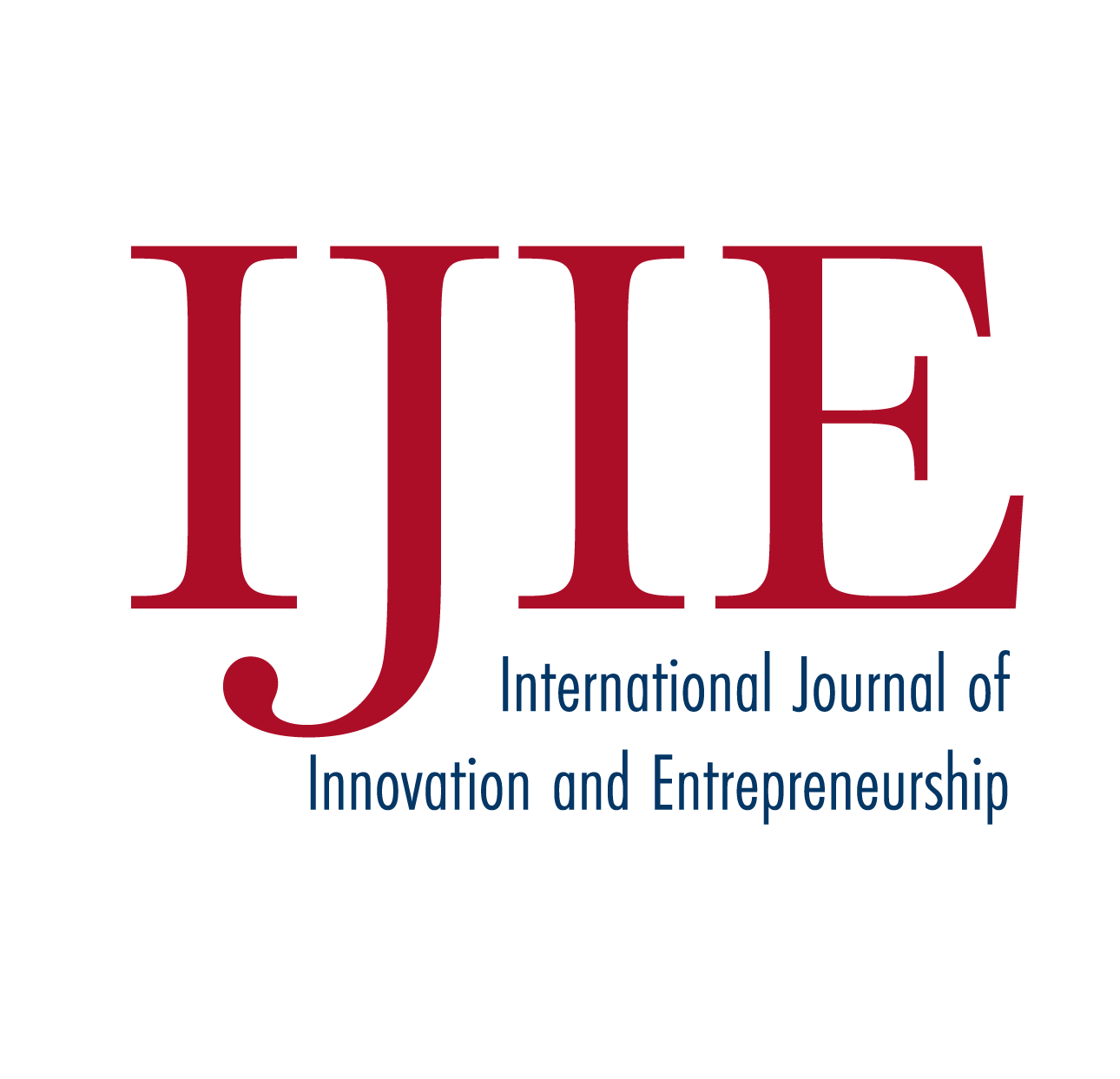International Journal of Innovation and Entrepreneurship
(ISSN: 2753-6297) Open Access Journal
Table of Contents
IJIE, Volume 1, Issue 1 (December 2022)
IJIE 2025, 1(1), 5; doi: 10.56502/ijie01010005
Received: 26 Feb 2025 / Accepted: 18 Mar 2025 / Published: 24 Mar 2025
PDF Full-text (921kb) | XML Full-text
The Ebola virus (EBOV) is a highly lethal pathogen responsible for Ebola virus disease (EVD), posing significant threats to global public health. This review examines the entry mechanisms, immune evasion strategies, and therapeutic advancements targeting EBOV. The virus infiltrates host cells via receptor-mediated
[...] Read more.
The Ebola virus (EBOV) is a highly lethal pathogen responsible for Ebola virus disease (EVD), posing significant threats to global public health. This review examines the entry mechanisms, immune evasion strategies, and therapeutic advancements targeting EBOV. The virus infiltrates host cells via receptor-mediated binding, macrophage phagocytosis, and endosomal membrane fusion, processes that facilitate viral replication and subsequent disease progression. We analyze EBOV’s immune evasion tactics, particularly its suppression of innate and adaptive immune responses through viral proteins such as VP35 and soluble glycoprotein (sGP). Current therapeutic strategies are also discussed, including prophylactic vaccines (e.g., Ervebo® and Zabdeno®) that effectively prevent infection and monoclonal antibody therapies (e.g., ZMapp, Ebanga®, and INMAZEB®) undergoing clinical optimization. Despite progress in EBOV treatment, persistent challenges such as global inequities in vaccine distribution and development hinder effective disease control. Future research should prioritize elucidating host–pathogen interactions to refine therapeutic targets, developing broad-spectrum vaccines to address viral diversity, and enhancing international collaboration to ensure equitable access to treatments in resource-limited, outbreak-prone regions.
Full article
IJIE 2025, 1(1), 4; doi: 10.56502/IJIE1010004
Received: 29 Dec 2024 / Accepted: 21 Jan 2025 / Published: 4 Feb 2025
PDF Full-text (204kb) | XML Full-text
This paper investigates the factors influencing blockchain adoption and its impact on firm performance using a panel dataset of NASDAQ-listed companies. Drawing on the Resource-Based View and Transaction Cost Theory, we employ an Endogenous Treatment Effects model to address self-selection bias. The results
[...] Read more.
This paper investigates the factors influencing blockchain adoption and its impact on firm performance using a panel dataset of NASDAQ-listed companies. Drawing on the Resource-Based View and Transaction Cost Theory, we employ an Endogenous Treatment Effects model to address self-selection bias. The results reveal that organisational capabilities, such as firm size and sales growth, enable blockchain adoption, while intangible intensity and capital expenditure intensity act as barriers. Industry-wide adoption shows limited influence, suggesting underdeveloped network effects. Blockchain adoption significantly improves operational performance, as measured by Return on Assets (ROA), but has no significant effect on Tobin’s Q, a market-based performance measure. This result highlights investor scepticism and delayed value realisation. The study argues for strategic communication to bridge this perception gap and calls for policy initiatives to address adoption barriers and promote blockchain’s widespread implementation.
Full article
IJIE 2022, 1(1), 3; doi: 10.56502/IJIE1010003
Received: 2 Aug 2022 / Accepted: 31 Oct 2022 / Published: 19 Dec 2022
PDF Full-text (211kb) | XML Full-text
This paper comprehensively reviews how innovation and growth are modelled in theoretical and empirical literature. We distinguish between economic modelling (microfounded) and econometric modelling (ad hoc). The two modelling approaches are complementary to each other for their comparative advantages in causality identification and
[...] Read more.
This paper comprehensively reviews how innovation and growth are modelled in theoretical and empirical literature. We distinguish between economic modelling (microfounded) and econometric modelling (ad hoc). The two modelling approaches are complementary to each other for their comparative advantages in causality identification and forecasting performance. Popular models of the two approaches are illustrated and compared. We also propose an eclectic approach to combine the two approaches in one analysis framework.
Full article
IJIE 2022, 1(1), 2; doi: 10.56502/IJIE1010002
Received: 20 Nov 2022 / Accepted: 1 Dec 2022 / Published: 8 Dec 2022
PDF Full-text (1064kb) | XML Full-text
The contamination of water resources has become a significant challenge that threatens the health and well-being of people’s daily life; it calls for new technologies to be applied for water purification. Heterogeneous Fenton or Fenton-like techniques have a lot of potential as a
[...] Read more.
The contamination of water resources has become a significant challenge that threatens the health and well-being of people’s daily life; it calls for new technologies to be applied for water purification. Heterogeneous Fenton or Fenton-like techniques have a lot of potential as a new approach for treating wastewater because of the advantages in efficiency, safety, and economics. Various advanced oxidation processes (AOPs) are comprehensively reviewed in this work, and the •OH generation methods including chemical, electro-chemical, and photochemical approaches are summarized. Some key parameters that influence the reaction efficiency such as the temperature, catalysts, H2O2 dosage, and pH are investigated. The reaction mechanism and process optimization of photocatalysis are specifically highlighted.
Full article
IJIE 2022, 1(1), 1; doi: 10.56502/IJIE1010001
Received: 25 Aug 2022 / Accepted: 8 Sep 2022 / Published: 9 Sep 2022
PDF Full-text (176kb) | XML Full-text
